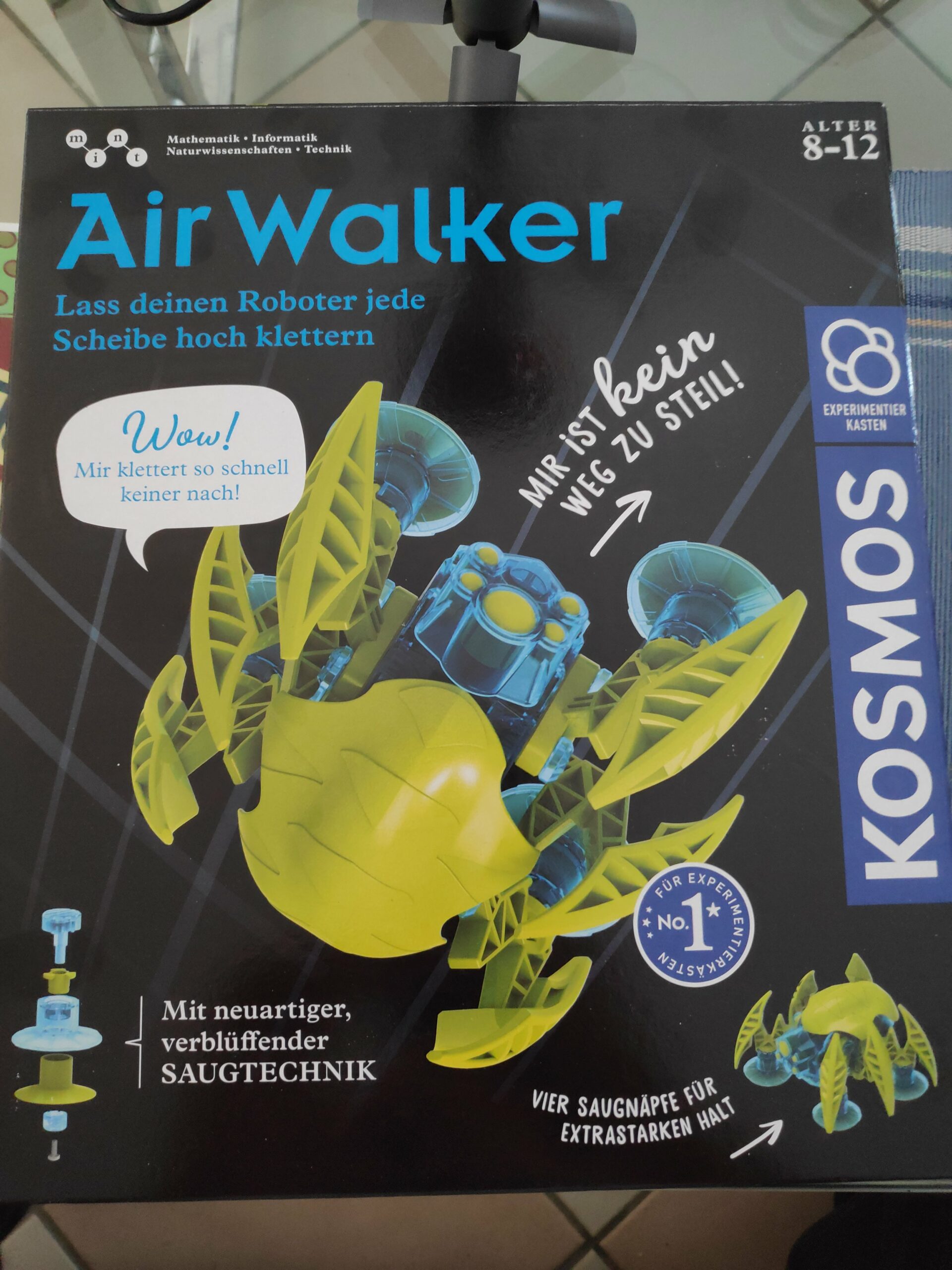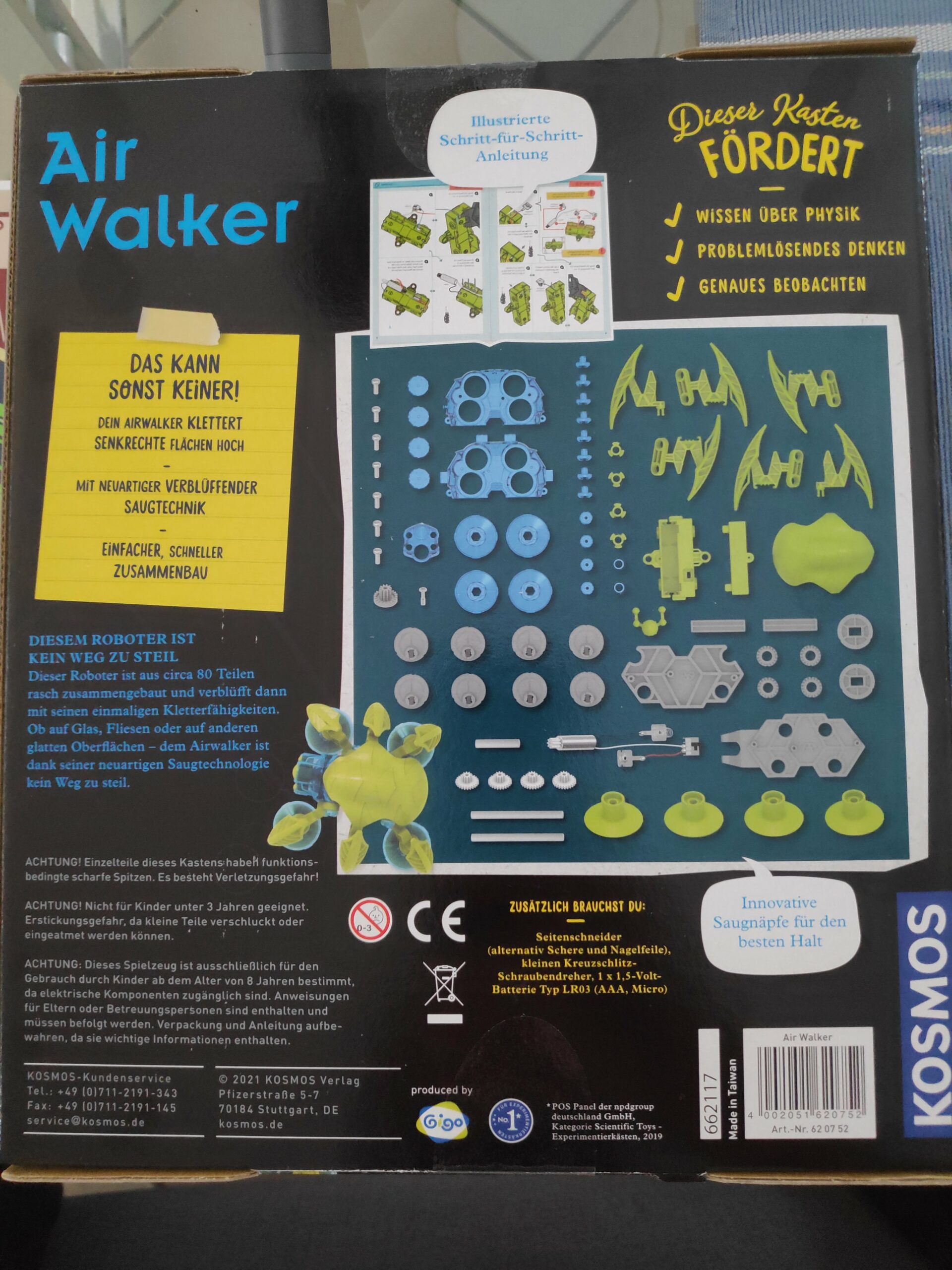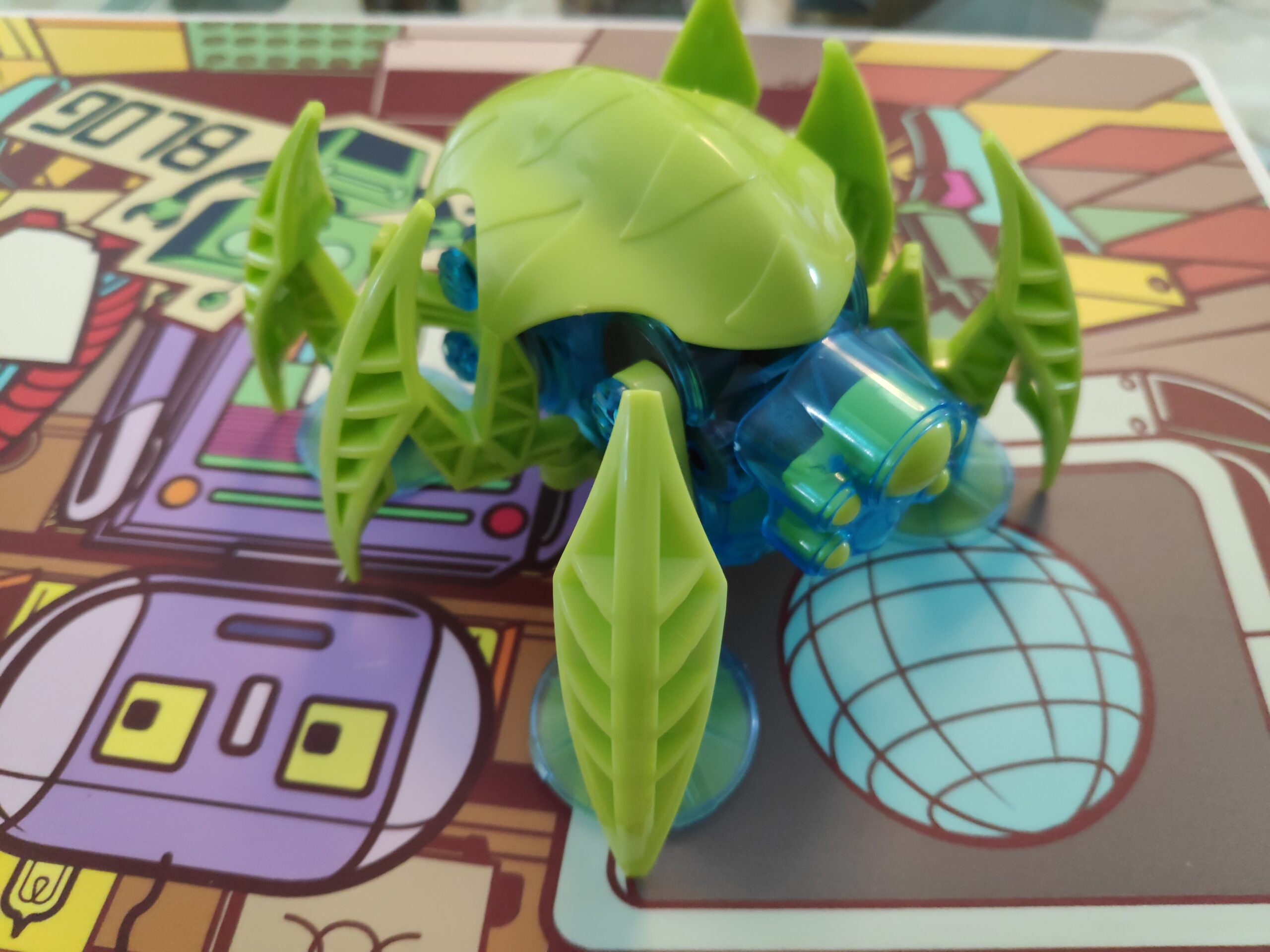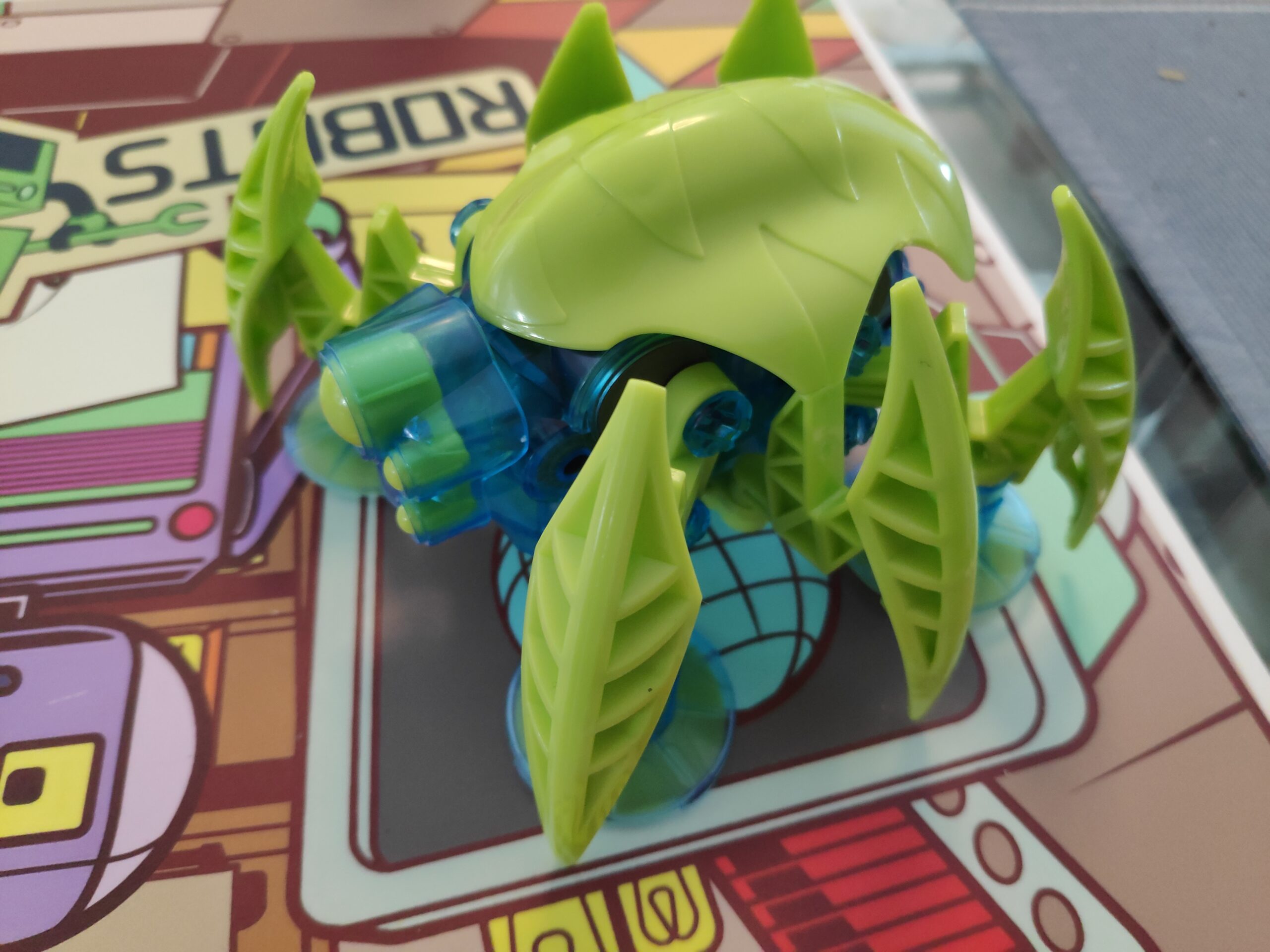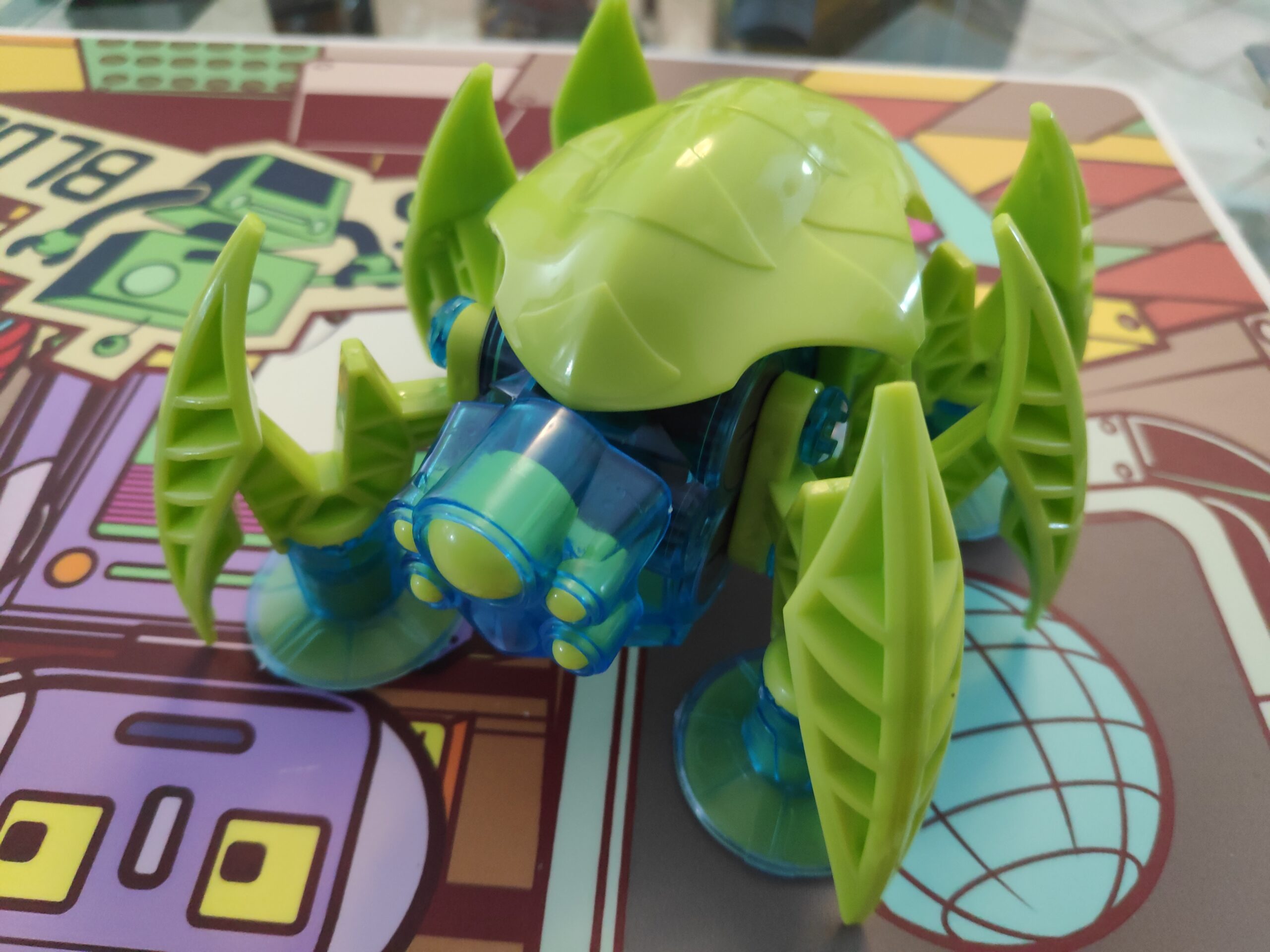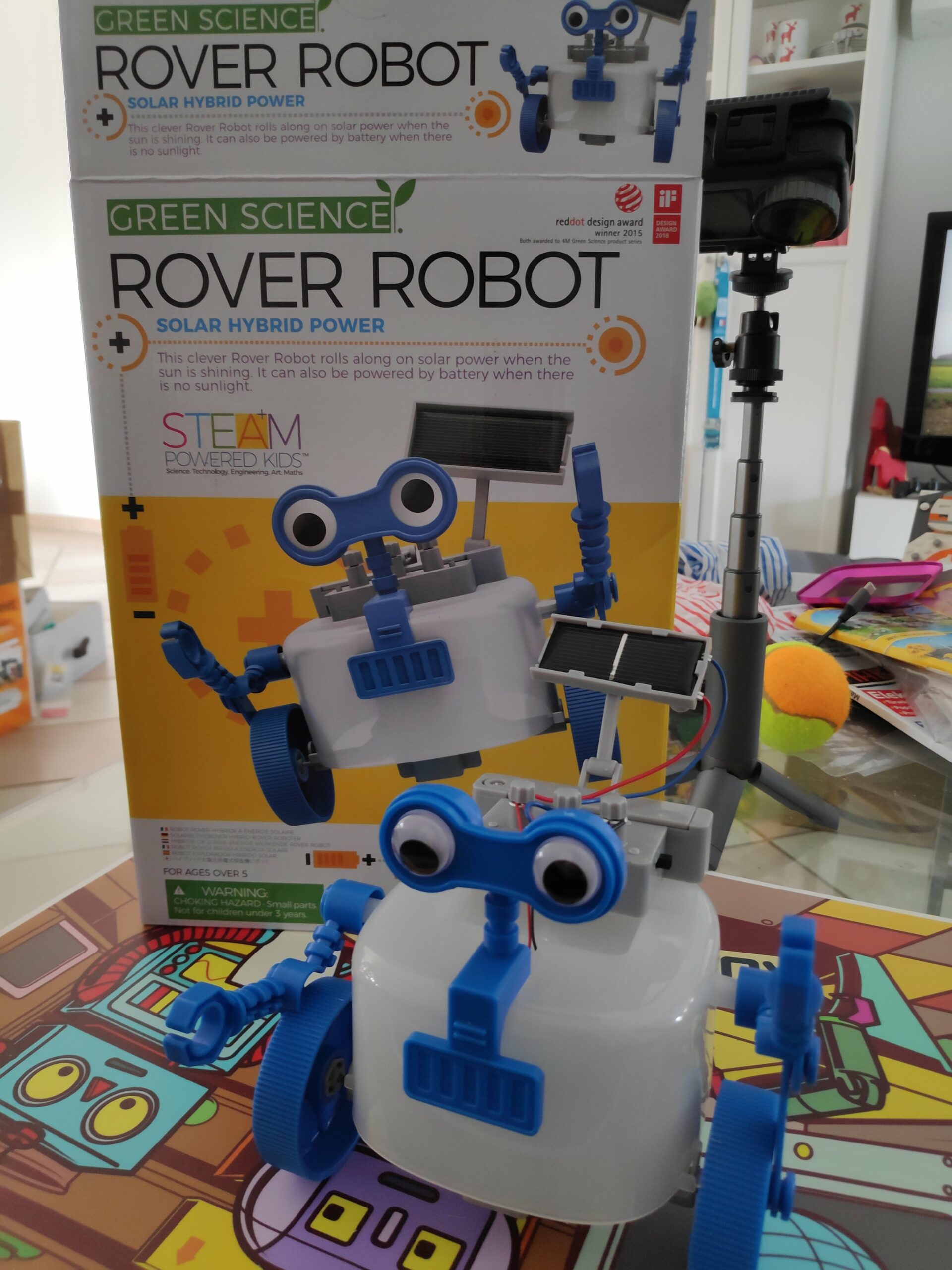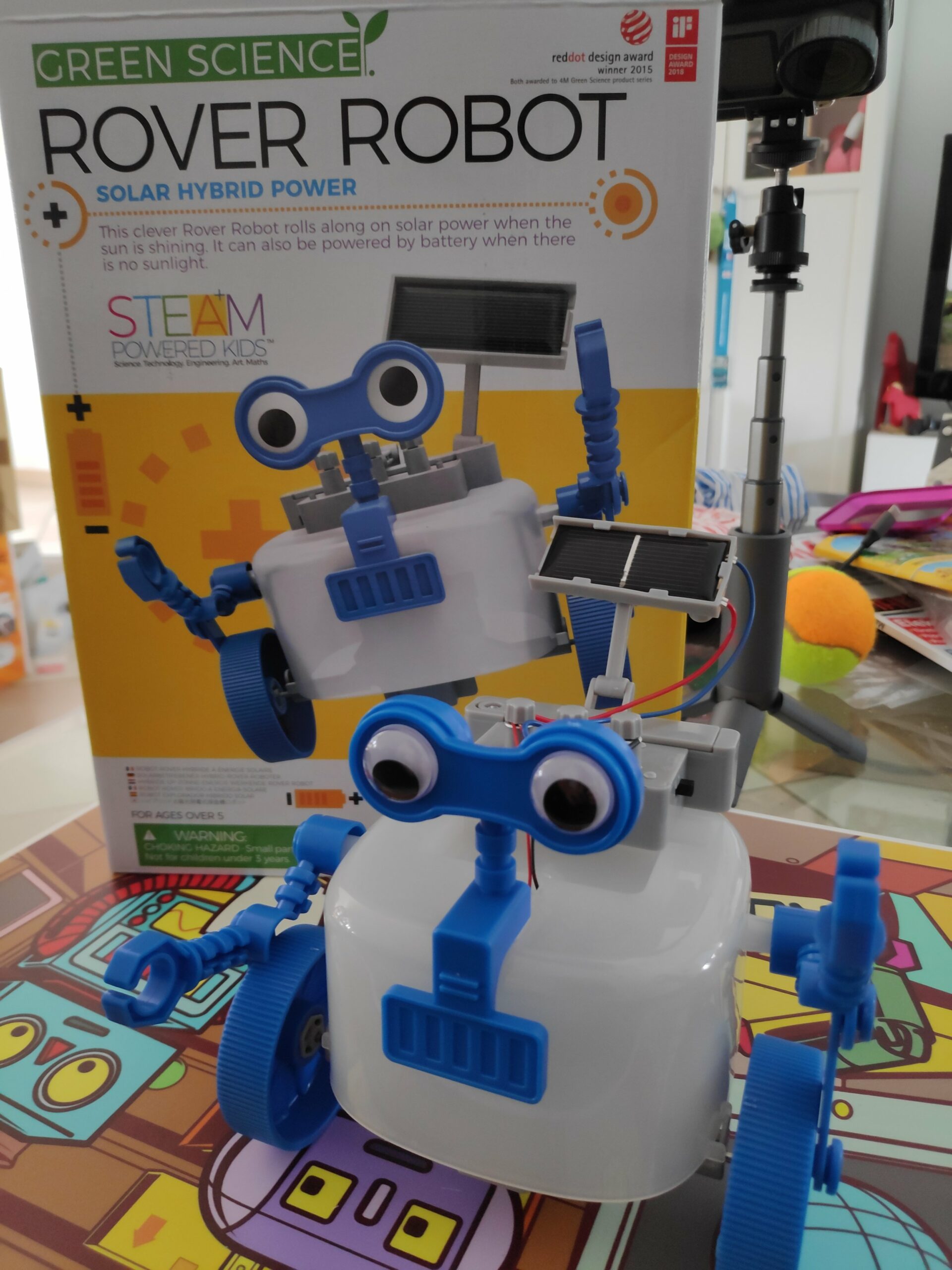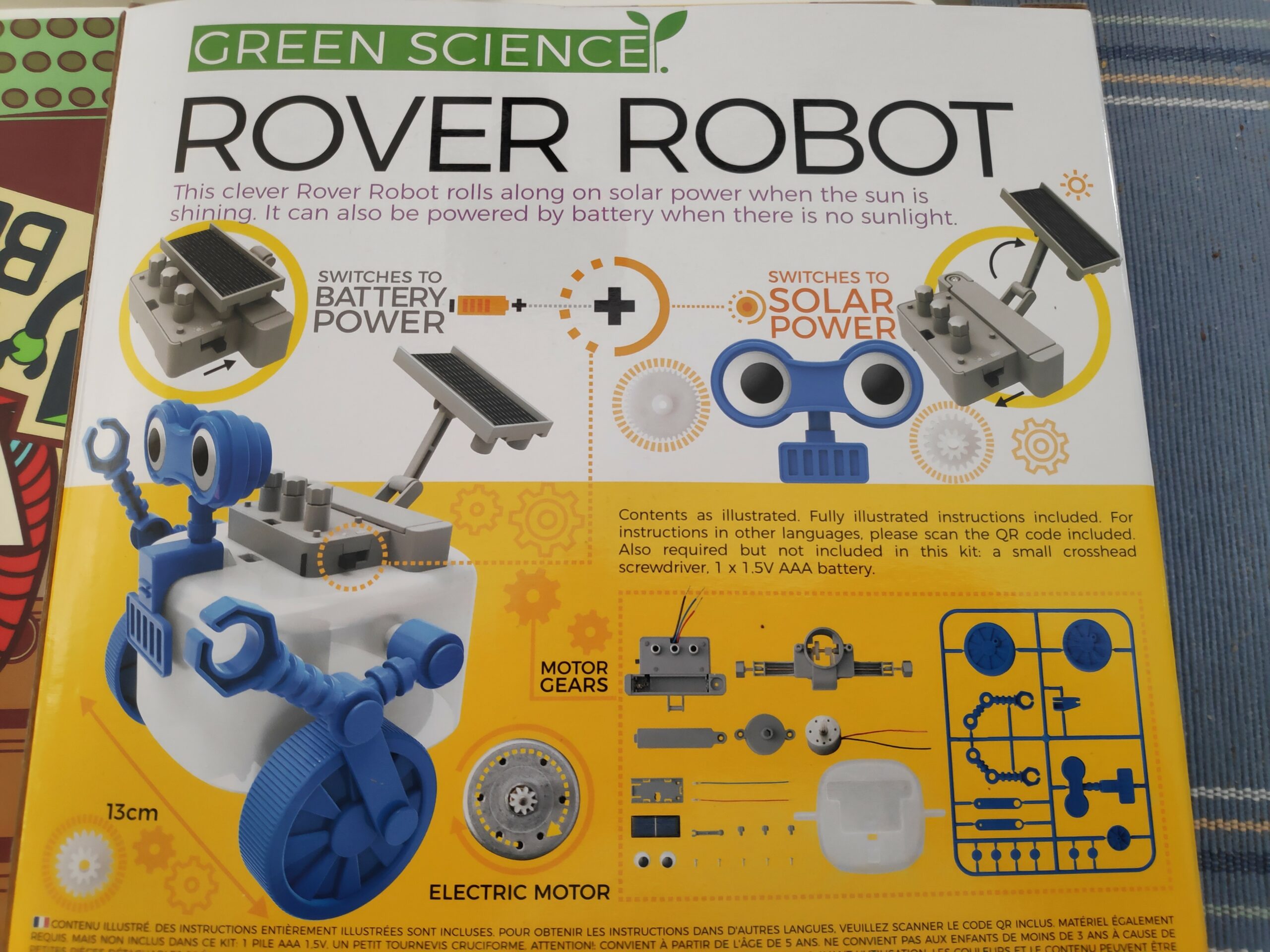Archiv der Kategorie: Education & Studies
4M Green Science Rover Robot Hybrid Solar Power
Revenues from Robotics Deployed in Warehouses to Cross US$51 Billion by 2030
Evolving e-commerce fulfillment operations and technical improvements in robotics tech and AI are rapidly growing the commercial robotics market
New York, New York – 18 Aug 2021, The warehousing industry has ramped up its automation efforts considering the increased order volume and labor shortages fueled by the pandemic. In addition to technology solutions such as Augmented Reality (AR) powered smart glasses and handheld devices with enhanced capabilities, autonomous, collaborative, and mobile robots are proving to be the most popular and fastest-growing productivity-enhancing solution in the warehouse workspace. According to ABI Research, a global tech market advisory firm, worldwide commercial robot revenue in warehouses will have a Compounded Annual Growth Rate (CAGR) of over 23% from 2021 to 2030 and exceed US$51 billion by 2030.
“Mobile robots are at the heart of the warehouse robotics market and account for most shipments and revenue. These robots, made up of Autonomous Guided Vehicles (AGVs) and Autonomous Mobile Robots (AMRs), are being used to move goods within the warehouse and being integrated within wider automated or manual workflows,” states Adhish Luitel, Industry Analyst, Supply Chain Management and Logistics at ABI Research.
Commercially speaking in the warehouse sector, robotics has moved from the early exploration phase to a more mature market in which early adopters are benefitting from live implementations of fully capable technical solutions. As a sign of the growing maturity of the market, a wide number of vendors such as Advantech, Brochesia, Kontakt.io, and RightHand Robotics now offer compelling products and solutions. The surrounding ecosystem of software vendors and systems integrators is also maturing, as software and integration capabilities become increasingly important factors for commercial differentiation. ABI Research has assessed fulfillment and warehousing processes of dominant operators such as Penske, A. Duie Pyle, Amazon, and JD.com to evaluate the efficacy of deploying solutions and friction points that might arise. These companies have been reaping the benefits of enhanced key performance metrics such as shorter dock-to-stock cycles and improved inventory accuracy thanks to successful deployment of various automation and vision-based solutions in their day-to-day operations.
“In addition to robots, warehouse operators should be seeking to combine the value of multiple solutions across the fulfillment workflow to achieve desired results. There is also a need for operators to look beyond productivity and assess how technologies affect worker satisfaction and safety, worker comfort, energy consumption, distance traveled, and error rates,” Luitel explains.
For example, “Pick-by-vision” solutions from augmented reality vendors such as Picavi demand a mere 15-minute training time and can boast up to 30% efficiency gains and up to 60% in time savings for training. In addition, order storage and automated order dispenser solutions from Alert Innovation help grocery retailers enhance their Return on Investment (ROI) by over 50% versus traditional automated picking systems.
“We can also expect intelligent automation solutions to influence processes across the supply chain. In the future, operators will be venturing further into solutions like Robotic Process Automation (RPA) and mobile warehousing,” Luitel concludes.
These findings are from ABI Research’s Modern Fulfillment Trends: Warehouse Robotics, Handheld Devices and Wearables technology analysis report. This report is part of the company’s Supply Chain Management & Logistics research service, which includes research, data, and ABI Insights. Based on extensive primary interviews, Application Analysis reports present in-depth analysis on key market trends and factors for a specific technology.
About ABI Research
ABI Research provides actionable research and strategic guidance to technology leaders, innovators, and decision makers around the world. Our research focuses on the transformative technologies that are dramatically reshaping industries, economies, and workforces today. ABI Research’s global team of analysts publish groundbreaking studies often years ahead of other technology advisory firms, empowering our clients to stay ahead of their markets and their competitors.
Luwu Intelligence Technology Announces Launch of XGO-Mini: An Advanced Quadruped Robot With AI Modules
BEIJING, Aug. 3, 2021 /PRNewswire/ — Luwu, a STEM education technology company, has announced the launch of XGO-Mini, a 12 DOF, omnidirectional quadruped robot that can interact with its surroundings using voice, image recognition, and tracking. This programmable, open-source robot is the perfect way to learn about robotics for new and advanced users. XGO-Mini is available now on Kickstarter: https://www.kickstarter.com/projects/xgorobot/xgo-mini-an-advanced-quadruped-robot-with-ai-modules.
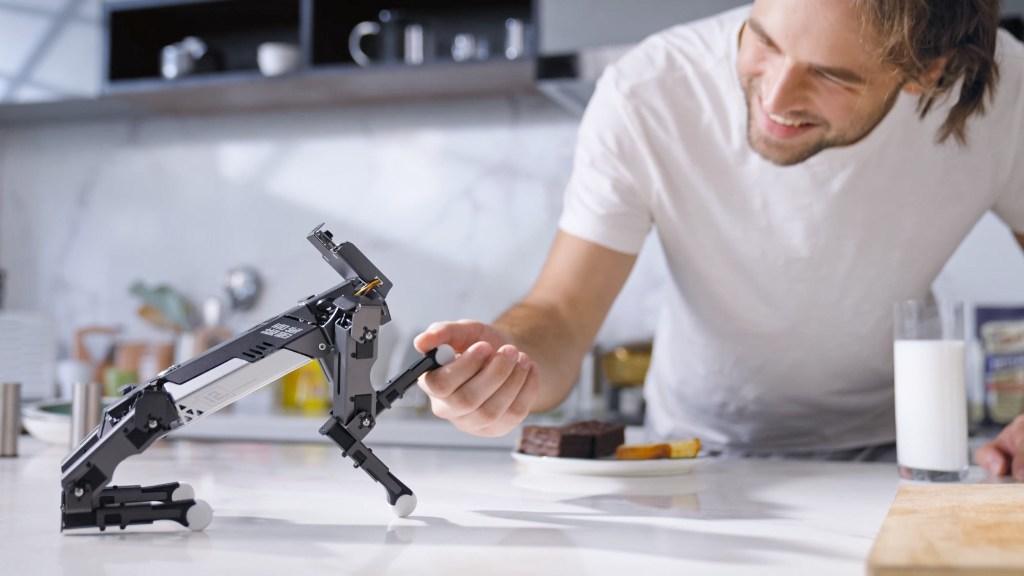
At first glance, XGO-Mini appears to be an incredible full-motion robotic dog. But it’s so much more than that. This desktop-sized AI quadruped robot with 12 degrees of freedom can achieve omnidirectional movement, six-dimensional posture and a variety of motions. As a quadruped robot, XGO-Mini can mimic the natural motion of a dog walking and is capable of movement on uneven terrain and extremely rough surfaces. It can even adapt to avoid obstacles by adjusting its height. With its unique bionic system, XGO Mini can perform any dynamic movement. Equipped with a 9-axis IMU, its joint position sensor and electric current sensor are able to reflect to its own posture and joint rotation angle and torque, which are used for algorithms verification and exploitation. The robot can be programmed for a variety of education, research, algorithm verification, and entertainment possibilities.
„As a technology company centered on robotics and STEM education, we understand the importance of robotics and AI education for youngsters. These technologies will be a key to the future. XGO Mini, a bionic quadruped robot dog for youth AI education, is the perfect platform for developing robotics and programming skills in a fun way. With 12 DOF, omnidirectional movement, and advanced-level AI, it is capable of virtually any movement or task and gives users unlimited programming possibilities that help users to explore, learn, and have fun,“ said Luwu Intelligence Technology Product Manager Pengfei Liu.
XGO-Mini is an incredibly versatile robot that can perform a variety of useful tasks and can be a very helpful assistant in daily life. It features fully functional AI modules that can facilitate both entry- and advanced-level AI applications. The Al modules feature visual recognition, voice recognition, and gesture recognition, giving XGO-Mini the ability to hear, recognize and reply to users like a real dog. It also can track multiple colors and recognize QR codes.
As an open-source robot with the Robot Operating System (ROS) and compatible with Python AI system, anyone can create their own functions for XGO-Mini. It can also be programmed by using common coding languages like Python and C++ that make it perfect for STEM education.
XGO-Mini Advanced Quadruped Robot with AI Modules is an incredible robotics platform for entertainment, STEM education, and exploring creativity. XGO-Mini is available now on Kickstarter with special pricing for early supporters. Learn more here: https://www.kickstarter.com/projects/xgorobot/xgo-mini-an-advanced-quadruped-robot-with-ai-modules.
Better gripping with intelligent picking robots
Researchers from Germany and Canada work on new AI methods for picking robots.
ISLANDIA, NY, July 7, 2021 — Production, warehouse, shipping – where goods are produced, stored, sorted or packed, picking also takes place. This means that several individual goods are removed from storage units such as boxes or cartons and reassembled. With the FLAIROP (Federated Learning for Robot Picking) project Festo and researchers from the Karlsruhe Institute of Technology (KIT), together with partners from Canada, want to make picking robots smarter using distributed AI methods. To do this, they are investigating how to use training data from multiple stations, from multiple plants, or even companies without requiring participants to hand over sensitive company data.
“We are investigating how the most versatile training data possible from multiple locations can be used to develop more robust and efficient solutions using artificial intelligence algorithms than with data from just one robot,“ says Jonathan Auberle from the Institute of Material Handling and Logistics (IFL) at KIT. In the process, items are further processed by autonomous robots at several picking stations by means of gripping and transferring. At the various stations, the robots are trained with very different articles. At the end, they should be able to grasp articles from other stations that they have not yet learned about. „Through the approach of federated learning, we balance data diversity and data security in an industrial environment,“ says the expert.
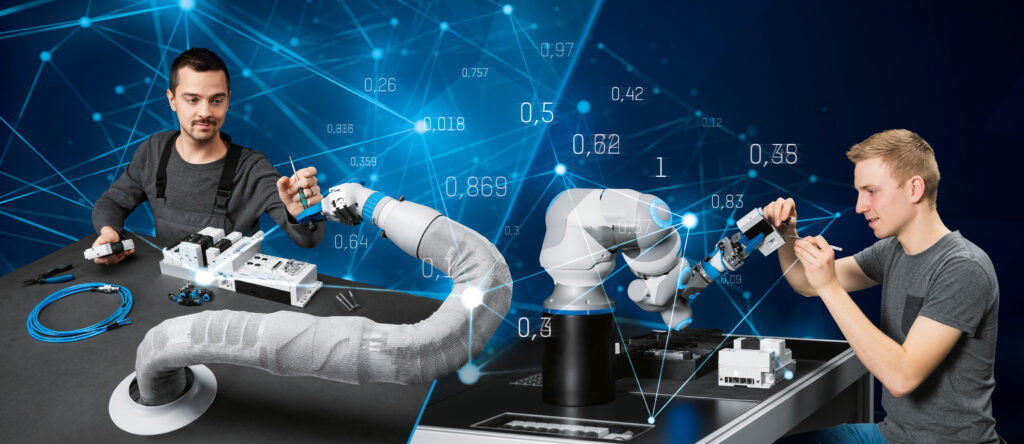
Powerful algorithms for industry and logistics 4.0
Until now, federated learning has been used predominantly in the medical sector for image analysis, where the protection of patient data is a particularly high priority. Consequently, there is no exchange of training data such as images or grasp points for training the artificial neural network. Only pieces of stored knowledge – the local weights of the neural network that tell how strongly one neuron is connected to another – are transferred to a central server. There, the weights from all stations are collected and optimized using various criteria. Then the improved version is played back to the local stations and the process repeats. The goal is to develop new, more powerful algorithms for the robust use of artificial intelligence for industry and Logistics 4.0 while complying with data protection guidelines.
“In the FLAIROP research project, we are developing new ways for robots to learn from each other without sharing sensitive data and company secrets. This brings two major benefits: we protect our customers‘ data, and we gain speed because the robots can take over many tasks more quickly. In this way, the collaborative robots can, for example, support production workers with repetitive, heavy, and tiring tasks”, explains Jan Seyler, Head of Advanced Develop. Analytics and Control at Festo SE & Co. KG During the project, a total of four autonomous picking stations will be set up for training the robots: Two at the KIT Institute for Material Handling and Logistics (IFL) and two at the Festo SE company based in Esslingen am Neckar.
Start-up DarwinAI and University of Waterloo from Canada are further partners
“DarwinAI is thrilled to provide our Explainable (XAI) platform to the FLAIROP project and pleased to work with such esteemed Canadian and German academic organizations and our industry partner, Festo. We hope that our XAI technology will enable high-value human-in-the-loop processes for this exciting project, which represents an important facet of our offering alongside our novel approach to Federated Learning. Having our roots in academic research, we are enthusiastic about this collaboration and the industrial benefits of our new approach for a range of manufacturing customers”, says Sheldon Fernandez, CEO, DarwinAI.
“The University of Waterloo is ecstatic to be working with Karlsruhe Institute of Technology and a global industrial automation leader like Festo to bring the next generation of trustworthy artificial intelligence to manufacturing. By harnessing DarwinAI’s Explainable AI (XAI) and Federated Learning, we can enable AI solutions to help support factory workers in their daily production tasks to maximize efficiency, productivity, and safety”, says Dr. Alexander Wong, Co-director of the Vision and Image Processing Research Group, University of Waterloo, and Chief Scientist at DarwinAI.
About FLAIROP
The FLAIROP (Federated Learning for Robot Picking) project is a partnership between Canadian and German organizations. The Canadian project partners focus on object recognition through Deep Learning, Explainable AI, and optimization, while the German partners contribute their expertise in robotics, autonomous grasping through Deep Learning, and data security.
- KIT-IFL: consortium leadership, development grasp determination, development automatic learning data generation.
- KIT-AIFB: Development of Federated Learning Framework
- Festo SE & Co. KG: development of picking stations, piloting in real warehouse logistics
- University of Waterloo (Canada): Development object recognition
- Darwin AI (Canada): Local and Global Network Optimization, Automated Generation of Network Structures
Visit www.festo.com/us for more information on Festo products and services.
About Festo
Festo is a leading manufacturer of pneumatic and electromechanical systems, components, and controls for process and industrial automation. For more than 40 years, Festo Corporation has continuously elevated the state of manufacturing with innovations and optimized motion control solutions that deliver higher performing, more profitable automated manufacturing and processing equipment.
Introducing the VEX V5 Workcell
VEX Robotics is revolutionizing workforce development education with VEX V5 Workcell
Comau partners with Heidelberg University to study new application areas for wearable robotics within industrial environments
- The project, run by Heidelberg University with the collaboration of IUVO, aims to enlarge the wealth of knowledge and scientific evidence proving the usability, acceptability and effectiveness of Comau’s MATE-XT exoskeleton in reducing biomechanical loads during strenuous tasks
- MATE-XT’s ergonomically-assisted support reduces muscle fatigue during overhead and repetitive operations
Grugliasco (Turin), June 17, 2021 – With the objective of strengthening the use of wearable robotics to facilitate human-machine collaboration, Comau and IUVO have partnered with Heidelberg University, one of Europe’s leading research institutions. The joint project aims to further quantify the degree to which the MATE-XT exoskeleton can reduce physical stress during strenuous tasks involving repetitive shoulder flexion movements within the German industrial context. The scientific study will analyze the biomechanics of using MATE-XT for new applications, under new conditions and within new industries and outdoor environments, while verifying users’ learning and motor adaptation speeds. The results achieved can be applied in similar conditions within other contexts all over the world.
The joint collaboration is fueled by the strong synergies in bio-engineering and advanced robotics that each partner brings to the table. Comau was introduced to Heidelberg University by IUVO, a spin-off company of Scuola Superiore Sant’Anna (Pisa, Italy). The majority share of IUVO is held by a joint venture between Comau and Össur, a market leader in the field of non-invasive orthopedics that improve human mobility, in which Comau is the majority holder. Comau has also co-developed both the original MATE and new MATE-XT exoskeletons together with IUVO.
The vast wealth of experience and scientific evidence collected by Comau and IUVO is the starting point of the new study. Heidelberg University will now research biomechanical and productivity results, among other factors, with the ultimate goal of collecting more data regarding MATE-XT’s effectiveness for novel and highly-demanding applications.
“The collaboration with Heidelberg University underscores our commitment to evolve the use of adaptive wearable technologies through the combination of empirically-backed research, advanced robotics and biomedical expertise,” said Giuseppe Colombina, Comau HUMANufacturing Innovation Hub Leader and CEO of IUVO.
“The collaboration with Comau and IUVO is extremely strategic for my research group at Heidelberg University. We have the chance to test a certified device from a leading automation company, and one that is also complementary to the robotic technology we have been designing here,” emphasized Lorenzo Masia, Ph.D. and Tenured Professor in Medical Technology and Biorobotics at Heidelberg University.
“The proliferation of wearable robotic devices represents a long-term, sustainable answer to ensure wellbeing in the workplace,” explained Nicola Vitiello, Ph.D., Associate Professor at Scuola Superiore Sant’Anna and founding partner of IUVO. “Our research with Heidelberg University, studying the use of MATE-XT within the German industrial context, will amplify our knowledge about the platform and potential development areas.”
The validation of breakthrough technologies in the field of biomedical devices and wearable robotics is an important step toward improving the quality of life for workers tasked with heavy, repetitive or highly manual operations. According to Comau estimates, the global market for exoskeletons alone will reach a 5-year CAGR of up to 40%, with the industrial sector representing close to half of this.
About Comau
Comau, a member of the Stellantis, is a worldwide leader in delivering advanced industrial automation products and systems. Its portfolio includes technology and systems for electric, hybrid and traditional vehicle manufacturing, industrial robots, collaborative and wearable robotics, autonomous logistics, dedicated machining centers and interconnected digital services and products able to transmit, elaborate and analyze machine and process data. With over 45 years of experience and a strong presence within every major industrial country, Comau is helping manufacturers of all sizes in almost any industry experience higher quality, increased productivity, faster time-to-market and lower overall costs. The company’s offering also extends to project management and consultancy, as well as maintenance and training for a wide range of industrial segments. Headquartered in Turin, Italy, Comau has an international network of 7 innovation centers, 5 digital hubs, 8 manufacturing plants and employs more than 9,000 people in 14 countries. A global network of distributors and partners allows the company to respond quickly to the needs of customers, no matter where they are located throughout the world. Through the training activities organized by its Academy, Comau is also committed to developing the technical and managerial knowledge necessary for companies to face the challenges and opportunities of Industry 4.0.
Enabot introduces EBO SE and EBO AIR, the next generation of social companion robots
The EBO SE and EBO AIR redefine the way people across the world interact, communicate and connect with one another
May 6th, 2021 – Enabot has officially launched on Kickstarter their brand-new social companion robots: the EBO SE and the EBO AIR. Starting today, both models are available for pre-order.
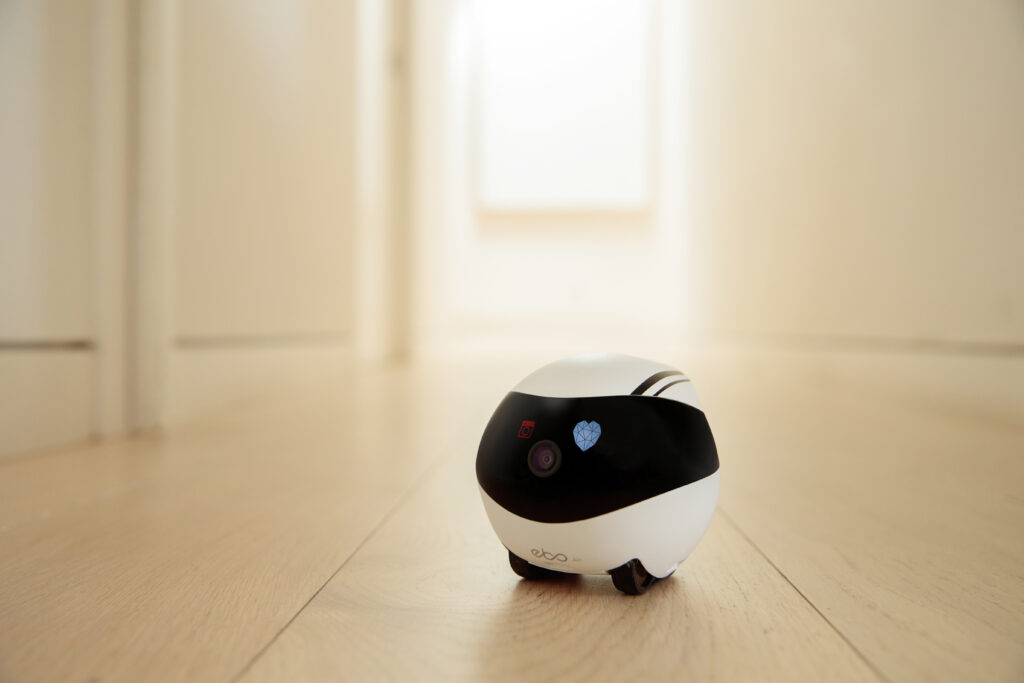
Building on the success of the original EBO S and EBO PRO, described by Mashable as “a smart robot [that] could become your cat’s new BFF” and by GearBrain as “one of the best robots to buy for your home in 2020”, the EBO SE and the EBO AIR are social companion robots, designed to keep your home safe, your pets entertained and your family connected at all times.
Originally created to solve the issue of pet obesity and pet neglect, the EBO evolved to be much more. The EBO SE and AIR represent the next evolutionary step for the home robotic companion. They provide comfort, protection, and companionship for everyone in the family, no matter the distance.
Responding to consumer feedback, Enabot has introduced a number of improvements and added exciting new features. The new EBO allows for multiple users to log in and control the robot. It also comes with night vision, so users can access the camera day and night. The EBO app’s new interface is more user-friendly, and the new wheels, combined with a powerful motor, ensure a smooth ride on all surfaces, including rugs and carpets.
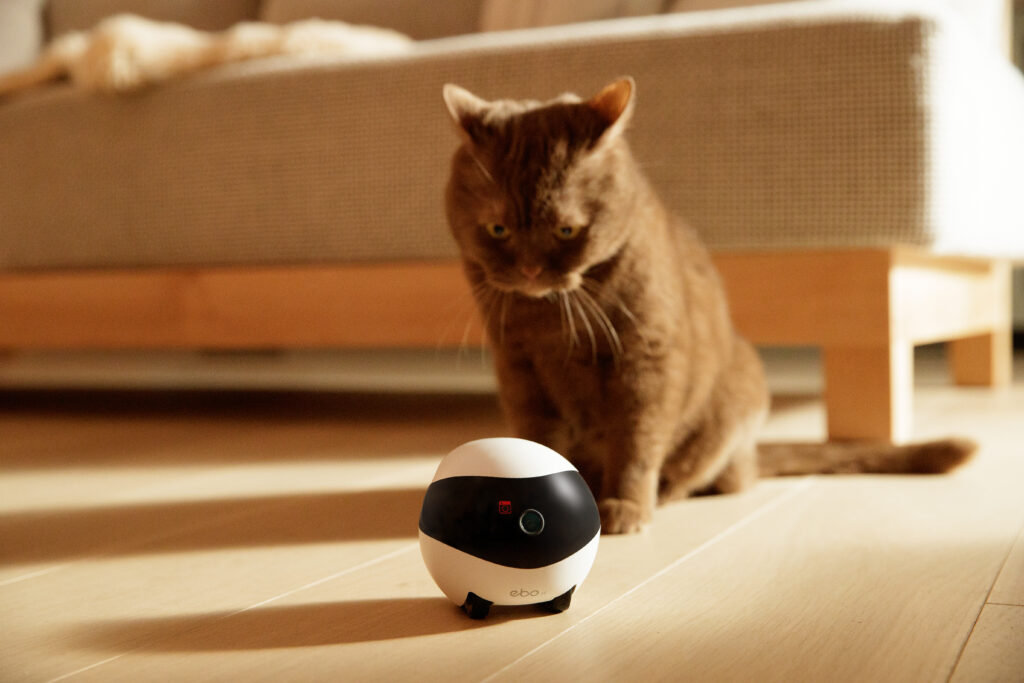
Equipped with a 1080p HD camera and a pair of speakers and microphone, the rolling bots allow for real-life two-way communication using a Wi-Fi connection. Through EBO’s mobile app, parents can remotely interact with their kids and pets, and family members can connect with elderly loved ones from anywhere in the world.
The EBO SE and AIR use a combination of movement, sound, and digital eye animations for life-like interactions. The steady and nimble moving robots can wheel, roll and dance to entertain pets and people alike while capturing photos and videos of every special moment. All the data is stored locally, using an expandable SD card.
Surveillance features on both models include 24-hour video recording, infrared night vision, and motion detection notification, which means the EBO will immediately send you an alert whenever suspicious activities are detected.
With exclusive AI technology, the EBO AIR is able to identify your family and pets, automatically record, track and follow them, allowing for fun interactions throughout the day. Additional AI features include the anti-drop function, pet auto-play mode, and automatic video editing.
Take a look at the EBO SE and EBO AIR Product Intro and see what role they can play in your family.
The EBO SE (priced at $ 99 / € 99 / £ 99) and the EBO AIR (priced at $ 169 / € 169 /£ 159) are now available to pre-order for up to 40% off from:
https://www.kickstarter.com/projects/enabot/ebo-your-smart-and-interactive-family-companion-robot
GinoBot by Engino – Base model with Gripper
Today I built the base model with a gripper and sent my feedback to the developers. It’s already really great product but there are always things to tweak or make better. Do not miss to support it on Kickstarter!
Weiterlesenflatcat, der gruseligste Roboter aller Zeiten, ist nur noch sieben Tage auf Kickstarter
Entweder haben Sie schon eins, oder Sie haben bald eins. Roboterhaustiere erobern die Verbrauchermärkte weltweit in Form von Babyrobben, Hundewelpen oder einem schwanzwedelnden Kissen. Jetzt bekommen sie Gesellschaft von einer überfahrenen Katze.

(lifePR) (Berlin, 14.05.21) flatcat wurde von Gizmodo ((https://gizmodo.com/…)) als “der gruseligste Roboter, den man je gesehen hat” betitelt, und das mag für einige tatsächlich so sein. Für viele andere ist es ein zugegebenermaßen seltsames, aber niedliches Roboter-Haustier, das sie umarmen und mit dem sie spielen wollen.
Die ersten paar Flatcats sind ab sofort und nur noch sieben Tage lang auf Kickstarter ((https://www.kickstarter.com/…), der beliebtesten Crowdfunding-Website, erhältlich. Die Kampagne steht kurz vor der Vollfinanzierung, braucht aber noch ein paar entscheidende Zusagen von Roboter-Enthusiasten aus nah und fern, die etwas bewegen wollen.
Der Roboter, der von Jetpack Cognition Lab , einem in Berlin ansässigen Unternehmen mit Grazer Wurzeln entwickelt und hergestellt wird, ist ein Roboter der neuen Art. Er ist völlig anders als alle anderen vergleichbaren Produkte auf dem Markt. Was ihn einzigartig macht, ist seine sensomotorische Kompetenz, die Kräfte seiner eigenen Bewegung und die von außen durch Menschen oder einfach durch die Schwerkraft erzeugten Kräfte zu spüren und darauf zu reagieren.
Die Fähigkeit, Kräfte direkt in den Gelenken zu spüren, erlaubt es Flatcat, neugierig zu sein und seinen eigenen Körper und die Welt auf die sicherste Art und Weise zu erkunden. Die Technologie dafür kommt aus dem Forschungsfeld der Entwicklungsrobotik, bei dem Teile der Entwicklung von Tieren und Menschen in Software und Algorithmen umgesetzt werden.
Mögliche Verwendungszwecke von flatcat sind als Haustier im Wohnzimmer, um einfach zu spielen und gemeinsam die Welt der sensomotorischen Erfahrung und Bewegung zu erkunden; als therapeutischer Roboter, um sanft einfache Bewegungen zu stimulieren, Gesellschaft und Trost zu spenden; oder als Desktop-Forschungs-Roboter für Wissenschaftler und Hacker:innen gleichermaßen, da er neben seiner hochmodernen sensomotorischen Sensibilität auch Open Source, erweiterbar und modifizierbar ist.
Jetpack Cognition Lab, Inc
Seit seinen Anfängen im Jahr 2019 bringt Jetpack Cognition Lab radikale Innovationen aus der wissenschaftlichen Forschung auf den Konsumentenmarkt. Die Gründer des Labs sind Dr. Oswald Berthold und Matthias Kubisch. Sie lernten sich während ihres Studiums an der Humboldt-Universität zu Berlin kennen und taten sich zusammen, um die schrägsten und lustigsten Roboter der Welt zu entwickeln.
Berthold ist ein in österreichischer Künstler-Technologe, geboren in Graz, der schon mit dem Kollektiv farmersmanual Musikgeschichte geschrieben hat, indem er neuartige Stile und innovative Ansätze zur digitalen Musikproduktion und -veröffentlichung im Internetzeitalter einführte. Spätestens seit er 2018 seine Promotion in Robotik innerhalb der Adaptive Systems Group der HU Berlin abgeschlossen hat, ist er damit beschäftigt, Grundlagenforschung in Kundennutzen zu verwandeln.
Kubisch ist ein deutscher Informatiker, Kreativer und Aktivist. Er hat als wesentliches Mitglied des Teams gearbeitet, das den modularen humanoiden Roboter Myon im ALEAR-Projekt unter der Leitung von Dr. Manfred Hild entwickelt hat. Außerdem hat er die Industrie von innen gesehen und Algorithmen zur Steuerung von elektrischen Kraftwerken entwickelt. Er ist nicht nur ein Experte für adaptive Echtzeitalgorithmen und maschinelles Lernen, sondern auch ein genialer Elektronikdesigner und Produktvisionär.

